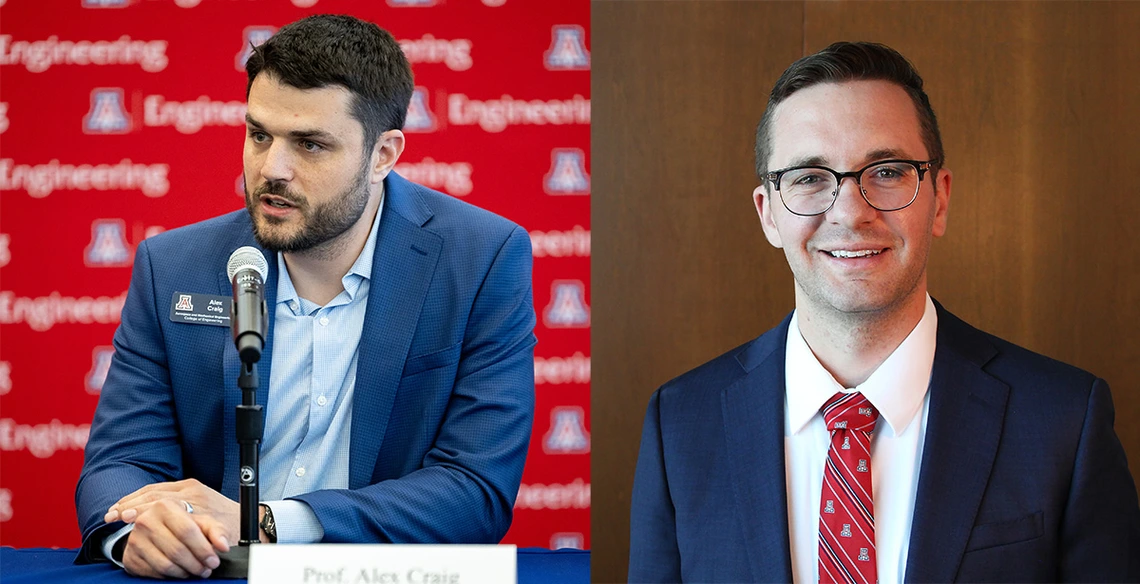AIAA selects Hanquist and Craig as associate fellows

The American Institute of Aeronautics and Astronautics has elected two aerospace and mechanical engineering faculty to its 2025 Class of Associate Fellows. The honor recognizes individuals who have accomplished important engineering or scientific work, or made valuable contributions to the fields of aeronautics or astronautics. Both awarded University of Arizona faculty work in the field of hypersonics – or speeds five times faster than sound.
“I knew I was being nominated for the award, which was an honor in and of itself,” said AME assistant professor Kyle Hanquist. “But receiving this award and looking at all the names in this Class of Associate Fellows was even more meaningful.”
Hanquist directs the Computational Hypersonics and Nonequilibrium Laboratory (CHANL) on campus. He earned the AIAA fellowship for his contributions to the study of electron transpiration cooling and hypersonic flow modeling.
“For me, what distinguishes hypersonics from supersonics is the concern about aerodynamic heating,” Hanquist said. “Electron transpiration cooling is an approach that converts this heat to electrons via thermionic emission as a way to manage the intense heating and even to provide power generation.”
Because hypersonic study requires expertise in multiple disciplines, Hanquist says collaboration is essential in his field, and that he’s been fortunate to work with other faculty and students on numerous successful projects.
AME associate professor Alex Craig has studied hypersonics with a wind tunnel on campus for years. His lab focuses on laminar-turbulent transition of hypersonic boundary layers and aerodynamic heating – essentially, how quickly a vehicle will heat up from the intense friction and air resistance caused by traveling five times the speed of sound or faster.
“We’ve done these types of projects for various government agencies focusing on basic and applied research as well as with industry partners,” Craig said. “Every time you have an object going into space or returning to the atmosphere, you’ll run into situations like this.”
Craig’s wind tunnel co-researcher, AME adjunct research professor Jesse Little, was previously awarded an AIAA associate fellowship for similar hypersonics research.
“We have a good core of hypersonics faculty at the university, especially in the field of aerodynamics,” Craig said. “My team has done a fair bit of collaboration with our colleagues in the field, which has been a real boon for our work, and hopefully theirs.”
